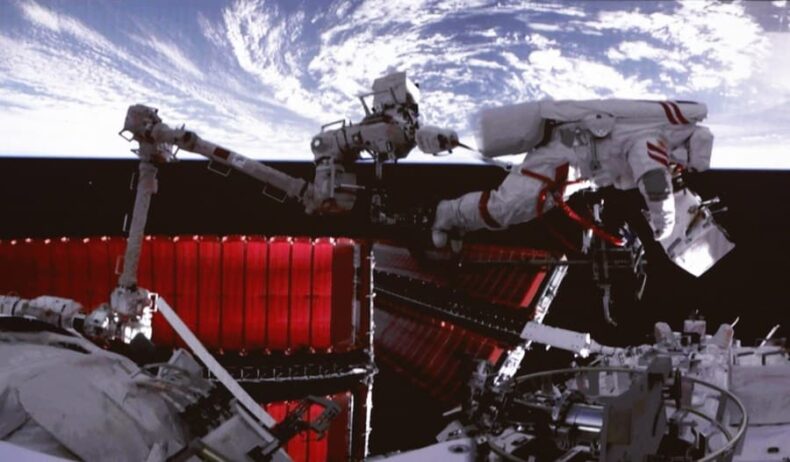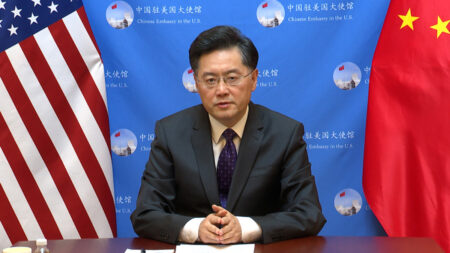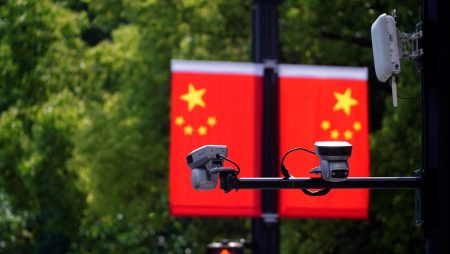The Shenzhou-15 crew of Chinese astronauts has undertaken three spacewalks since their four-month space flight (CMSA) reports the China Manned Space Agency . The third was completed on Thursday, 30, March 2024.

Along with astronaut Deng Qingming, who was on board the space station, astronauts Fei Junlong and Zhang Lu completed the third spacewalk. The two successfully completed all of their assigned tasks before returning to the lab module Wentian.
Since the Shenzhou-12 human mission in 2021, four crews have completed 10 spacewalks, mastering several important technologies. CMSA announced Extravehicular follow-up operations will proceed regularly as scheduled.
On October 15, 2021, China launched the crewed Shenzhou-15 mission into orbit. The mission was initiated to do space experiments and test equipment for China’s planned space station. Three astronauts made up the first crew, all of whom worked for the China National Space Agency (CNSA).
The second spacewalk generated a lot of controversy since the Chinese space agency chose to keep it under wraps. It was for the first time, China participated in the second extravehicular activity of a pair of Chinese astronauts without giving any prior notice or additional information about it.
Shenzhou mission:
The Shenzhou-15 mission astronauts Fei Junlong and Zhang Lu “recently” completed a spacewalk outside the Tiangong space station, reported CMSA on March 2. Why CMSA has not released information about the second mission is still a mystery. The People’s Liberation Army (PLA), which regulates the agency, has historically guarded even the most basic details concerning its astronaut corps.
The Shenzhou-15 mission astronauts Fei Junlong and Zhang Lu “recently” completed a spacewalk outside the Tiangong space station, reported CMSA on March 2. Why CMSA has not released information about the second mission is still a mystery. The People’s Liberation Army (PLA), which regulates the agency, has historically guarded even the most basic details concerning its astronaut corps.
Jonathan McDowell, an astronomer and space mission observer, agreed and pointed out that even the Soviets always specified the start time and duration of their spacewalks. McDowell stated through email that “there is no rational justification for China to be so secretive.”
Yet, details about China’s human spaceflight programs are frequently kept behind lock and key. For the Shenzhou-16 and Shenzhou-17 missions, which are slated to launch in May and November, respectively, two crews and backups have been chosen, according to official Chinese media. Yang Liwei, China’s first astronaut in space and a deputy chief designer at CMSA, made the announcement recently.
The Shenzhou-15 crew has finished a number of missions, including the in-orbit upkeep of the space station, during the course of the past month, during which the third space walk was done. Also, the in-orbit test for the Stirling thermoelectric converter is finished. The convertor, which can convert thermal energy into electricity with a comparatively high efficiency and power density, is anticipated to be employed in human lunar missions and deep-space exploration in the future, according to the CMSA.
The three Shenzhou 15 astronauts have been circling the globe onboard the Chinese Tiangong space station, completing the orbiter’s setup and carrying out scores of scientific and technological tests in an effort to send Chinese humans to the moon in the near future.
China’s Shenzhou-15 crew will return to Earth in June since it has completed the three spacewalks, the China Manned Space Agency (CMSA) announced on Sunday. According to the CMSA, the Shenzhou-15 crew is in good health and the space station combination is running steadily.
An important milestone for China’s space programme was the successful conclusion of the spacewalks, which showed the nation’s expanding capacity for technological advancement and space exploration.
Read more on: https://global.chinadaily.com.cn/a/202303/12/WS640dc115a31057c47ebb3e9b.html













